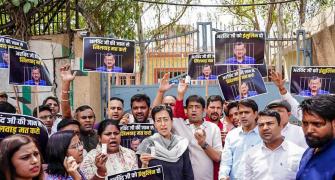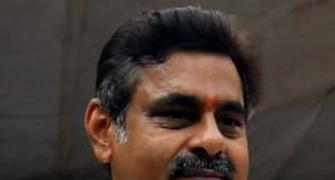"When your work is appreciated by 80 percent of the people, you are doing a good job. If the appreciation is only 50 percent, you may not be doing things properly. In my case, 95 percent of my colleagues, patients and authorities appreciate my work," says Dr Samin Sharma, who has performed 20,000 angioplasties and 35,000 angiograms in eight years.
Dr Sharma, director of the cardiac catheterisation laboratories, Mount Sinai Hospital, New York, is the national leader in installing stents, tiny metal devices that hold open blocked blood vessels.
But the procedure has suddenly attracted much attention and critics are looking at whether he is overdoing the procedure, even when drug therapy could achieve the same result as placing a stent, which costs about $20,000. A few studies started a debate about whether the need for profit resulted in the device being overused in interventional cardiology.
Studies suggest stents could cause blood clots that may be fatal. They also say stents may not be needed in many cases. "If medicines can be used instead of stents, we recommend that. Recently there is a small decline in angioplasties," Dr Sharma said.
Dr Sharma, who is also the cardiology professor at Mount Sinai, worked there for a year without pay to get into a fellowship program 19 years ago. He is currently termed the backbone of the hospital, which makes $1.2 billion a year, 15 percent of which comes from the Cath Lab he leads.
In safety, his lab performs better than the national average. The failure rate for those who place a stent at Dr Sharma's lab is only .25 percent; the national average is 1 percent. For those with completely blocked arteries, the failure rate is 10 percent nationally and only 4 to 5 percent at Dr Sharma's.
According to the New York State Department of Health, Dr Sharma has the highest success rate of angioplasty (mortality below 0.1 percent) in the entire group of interventional cardiologists in New York state since 1994.
After the studies came out, sales of stents slipped badly, Business Week reported.
Correspondingly, stock prices of the biggest manufacturers Boston Scientific and Johnson & Johnson declined.
Dr Sharma says he has no fascination for the stents, only for the welfare of the patient, he says. "After you make one or two million, money becomes unimportant. What is important is the work."
But some people question his methods. 'It is a lot easier for doctors in general to send someone to angioplasty than it is to take the time to explain to them why they don't need it. He is incredibly enthusiastic about angioplasty but, in my heart of hearts, I believe he is overselling it,' Dr Ira S Nash, an associate professor of cardiology at Sinai who favors the use of drugs over stents, told Business Week.
This March, another study by scientists with the Veterans Affairs Department found using stents to clear minor blockages was no better than using drugs. Though Dr Sharma does not fully agree with the findings, he said he is looking at each case more thoroughly now.
Dr Nash lists all the drawbacks of stents: They are pricey, they have to be given in the hospital, they don't decrease the mortality risk, and they can cause heart attacks. If angioplasty were a drug, he suggests, doctors would hesitate to prescribe it, according to Business Week.
Angioplasty was used for the first time 30 years ago instead of bypass surgery. Currently, 75 percent of patients go for angioplasty. Only 25 percent undergo a bypass. But in India, the percentage is fifty-fifty, said Dr Sharma, who is building a hospital in his native Jaipur.
The difference is a result of cost: A stent costs about $2,500. In the United States, insurance companies pay a fixed amount and you can get any number of stents. For some patients, two or more stents may be needed. In India, one has to pay for additional stents.
His lab, with 11 doctors, performed 5,174 angioplasties in 2006, nearly double the number performed three years earlier. The lab works 24 hours a day.
Critics say patients who receive drug-coated stents have more chances of stent- thrombosis or sudden clogging of the artery. It could be deadly, Dr Sharma agreed.
Although late stent thrombosis is rare, occurring in fewer than 1 percent, it happens without warning a year or more after the device is implanted. Last month, another study suggested the blood clot risk might be lower than originally reported. Other studies conclude the brand of stent dictates the risk.
Dr Sharma said Abbott Laboratories is trying to create a stent the body will absorb in a few months, reducing side effects. He is worried more Indians fall prey to heart problems and diabetes, though many are vegetarian.








